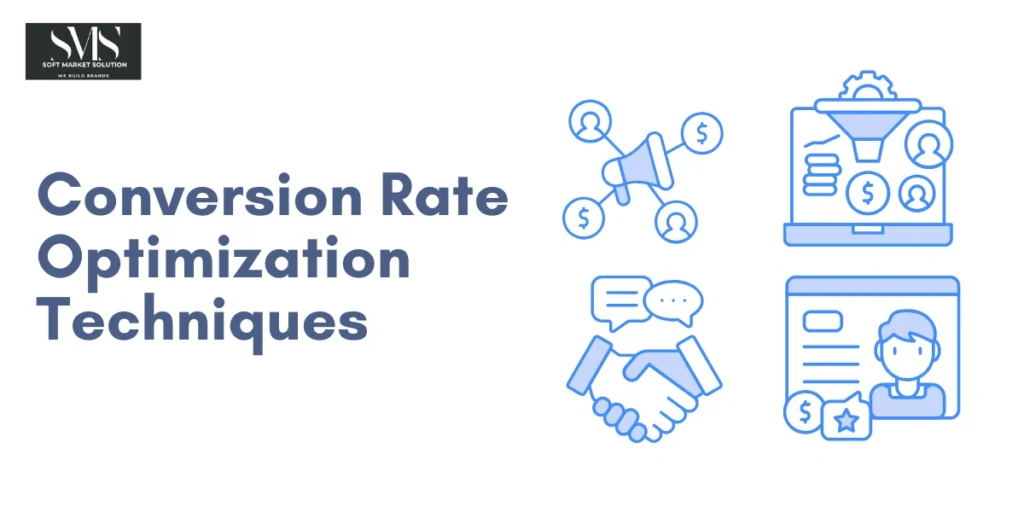
Bringing traffic to your website is important, but it’s only the first step. The real success lies in turning visitors into customers, subscribers, or leads. This is where conversion rate optimization (CRO) comes in.
In simple terms, CRO is the process of improving your website and marketing strategy to increase the percentage of visitors who complete a desired action. Whether it’s making a purchase, filling out a form, or signing up for a newsletter, conversion rate optimization in digital marketing ensures your hard-earned traffic delivers results.
In this blog, we’ll cover what is conversion rate optimization, why it matters, and the most effective conversion rate optimization strategies that can improve your website’s performance.
What Is Conversion Rate Optimization?
The definition of conversion rate optimization is straightforward: it’s about making changes to your website and marketing funnel that encourage more users to take action. A conversion doesn’t always mean a sale; it could be any goal you set, such as:
Clicking a call-to-action button
Downloading an ebook or guide
Requesting a quote or consultation
Registering for a webinar
Completing a purchase in your online store
Your website conversion rate optimization depends on factors like site design, loading speed, trust elements, and how smooth the user journey feels.
Here’s an example: If 1,000 people visit your site and 30 of them make a purchase, your conversion rate is 3%. With CRO, you can test different design, copy, or CTA strategies to increase that number to 5% or more.
Why Conversion Rate Optimization Matters in Digital Marketing
Focusing only on traffic growth isn’t enough. You could bring thousands of visitors through SEO or ads, but if your site doesn’t convert, you’re wasting money. That’s why conversion rate optimization in digital marketing is critical.
Benefits of CRO:
Higher ROI on marketing campaigns – SEO, paid ads, and social media campaigns perform better when your website is optimized for conversions.
Better user experience – CRO ensures your visitors find what they’re looking for quickly and easily.
More revenue without extra costs – Increasing conversions means you earn more from the same amount of traffic.
📊 Fact Check: According to WordStream, the average website conversion rate across industries is around 2.35%, while the top 25% of companies convert at 5.3% or higher. That means even small improvements in CRO can significantly impact your revenue.
Conversion Rate Optimization SEO: The Perfect Combination
SEO and CRO go hand in hand. While SEO brings visitors to your website, SEO conversion rate optimization ensures those visitors take action. Without CRO, your SEO traffic may not generate enough results.
For example, if you’re ranking for “best digital marketing agency,” SEO brings potential leads. But unless your landing page is optimized with clear CTAs, strong copy, and trust elements, visitors may leave without converting. That’s why conversion rate optimization SEO is one of the most effective approaches in digital marketing.
Key Conversion Rate Optimization Strategies
Here are some proven conversion rate optimization strategies to apply to your website:
1. Simplify Website Navigation
A cluttered menu or confusing layout frustrates users. Keep navigation clean and organized. Research shows that 76% of consumers say website usability is the most important factor in their decision-making process.
2. Optimize Call-to-Action Buttons
CTAs are small but powerful. Use action-focused words like “Get My Free Quote” or “Start Your Trial.” Testing CTA color, placement, and wording is a core part of website conversion rate optimization.
3. Improve Page Speed
Google reports that a 1-second delay in loading time reduces conversions by 12%. Compress images, enable caching, and reduce heavy scripts to keep your site fast.
4. Use Persuasive Copywriting
The words you use matter. Clear, benefit-driven copy works better than jargon. For example, instead of saying “Submit Form,” say “Get Your Free Guide.”
5. Mobile Optimization
More than 58% of web traffic comes from mobile devices (Statista, 2024). A mobile-friendly website is essential for both SEO and CRO.
6. Streamline Forms
Long forms often drive users away. Reduce unnecessary fields and only ask for essential information. Shorter forms can boost sign-ups by up to 160%, according to QuickSprout.
7. Use Social Proof
Testimonials, reviews, and case studies build trust. Adding real customer feedback can improve conversions by 34%.
8. Personalize the User Experience
Dynamic content, personalized product recommendations, or location-based offers can make visitors feel understood and more likely to convert.
Conversion Rate Optimization in E-Commerce
For e-commerce businesses, CRO is a game changer. Some effective tactics include:
Exit-intent popups to recover abandoning visitors
Adding trust badges and secure payment logos
Offering guest checkout to reduce friction
Providing free shipping or discounts for first-time buyers
💡 According to Baymard Institute, the average cart abandonment rate is 69.9%. Implementing CRO strategies like simplifying checkout and building trust can dramatically reduce that number.
Conversion Rate Optimization Best Practices
Here’s a quick checklist to keep in mind:
Understand user behavior – Use tools like Google Analytics and heatmaps to track how people interact with your site.
A/B test regularly – Test headlines, images, CTAs, and layouts. Even small changes can lead to big improvements.
Focus on first impressions – Users form an opinion about your site in just 0.05 seconds (Google study). Make sure your design is clean and professional.
Combine SEO and CRO – Ranking high is only half the battle. Pairing conversion rate optimization SEO with good content ensures traffic turns into results.
Keep improving – CRO isn’t a one-time task. It requires continuous monitoring and testing.
Conclusion
The definition of conversion rate optimization goes beyond boosting numbers it’s about creating a smooth, trustworthy experience that encourages visitors to take meaningful actions. By combining conversion rate optimization in digital marketing with SEO, you not only attract traffic but also convert it into revenue.
Whether you run an e-commerce store, a SaaS platform, or a service-based business, applying the right conversion rate optimization strategies can give you a strong competitive advantage.
Start with simple steps like improving navigation, optimizing CTAs, and speeding up your site. Over time, test new ideas and track what works best. The goal is always the same: help users find value and encourage them to take action.
👉 Ready to grow your business? Begin applying these website conversion rate optimization techniques today and watch your conversions climb.
